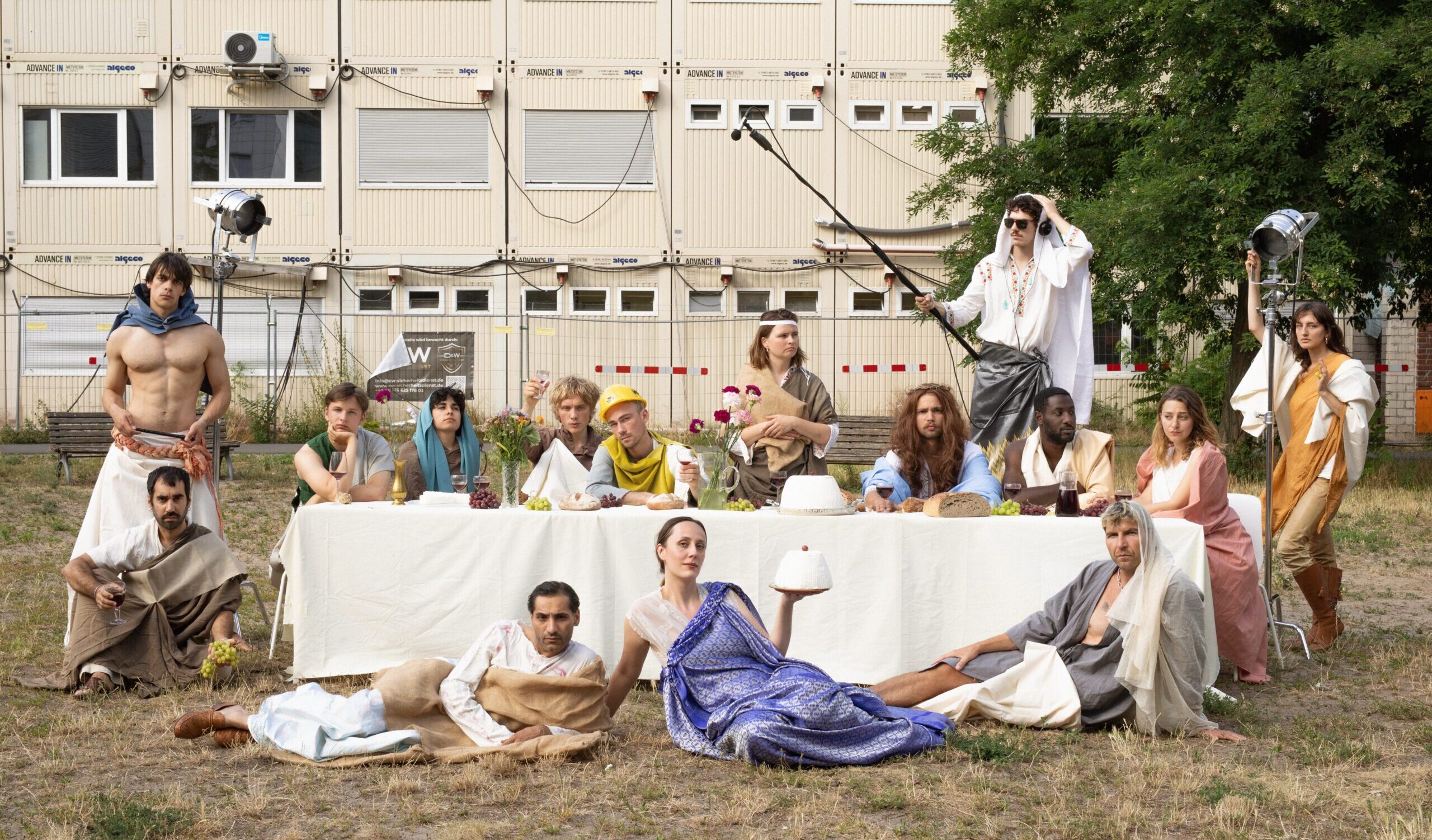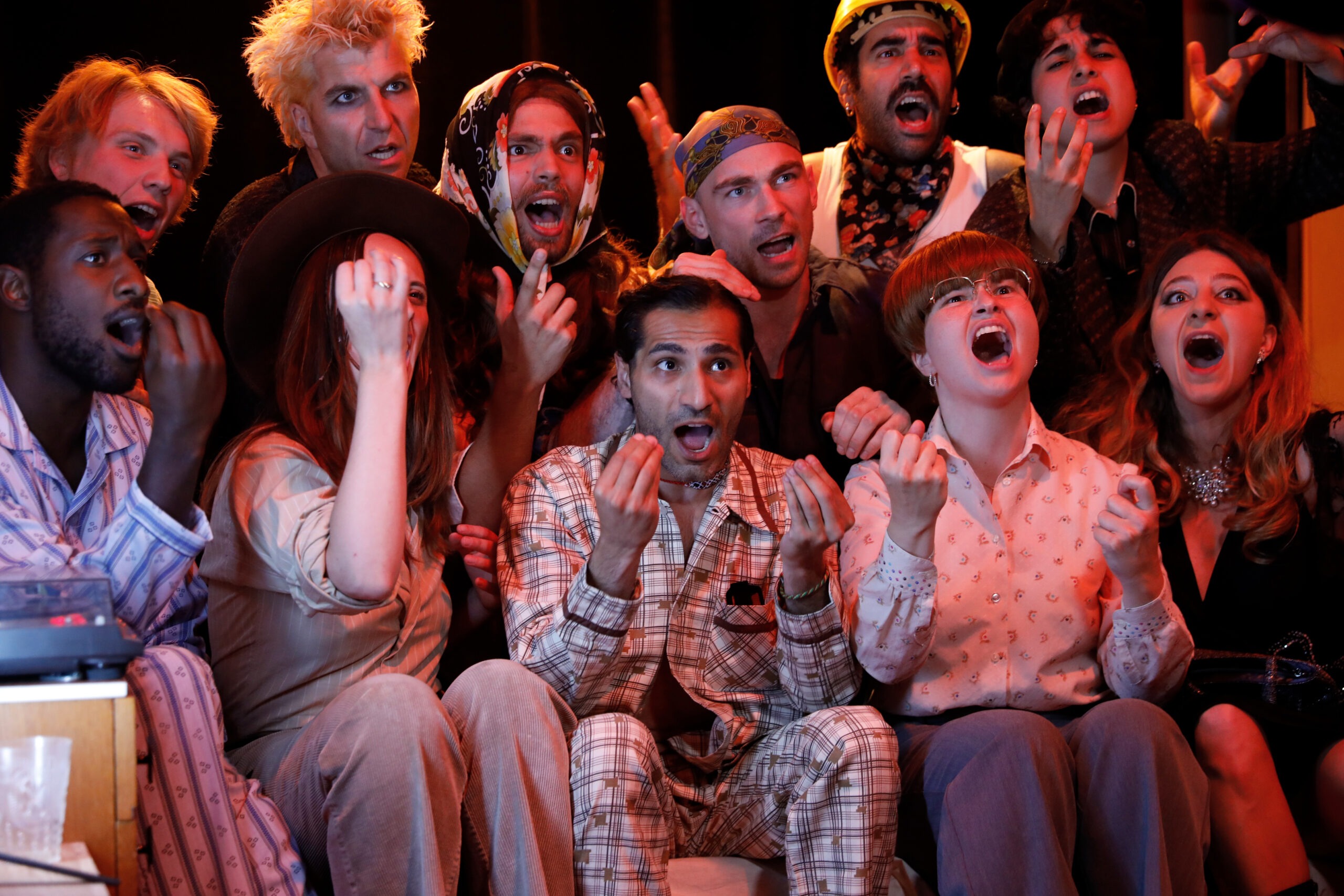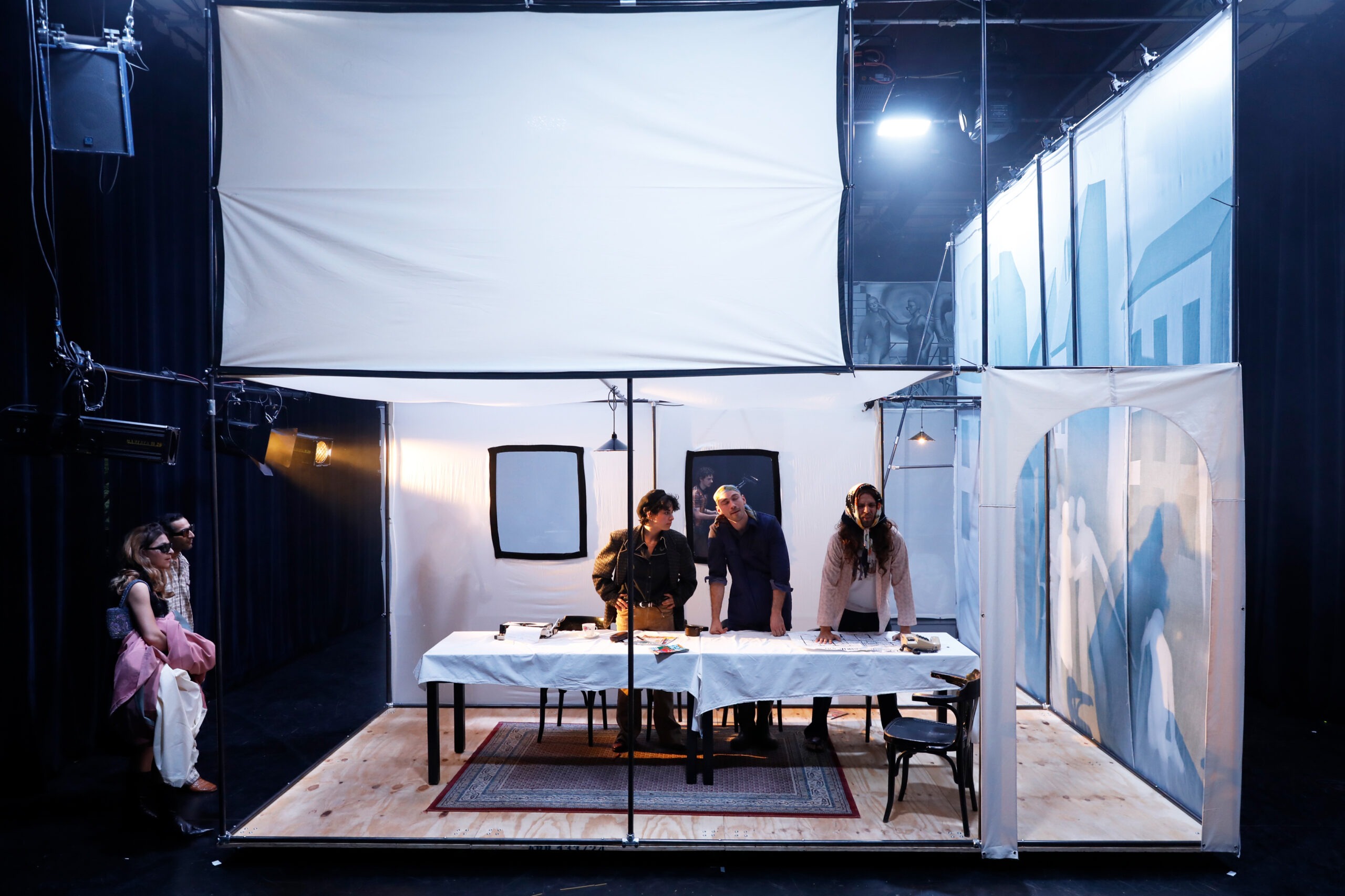Trumm usually appears in the plural, but there is actually also the singular, the Trumm. A trumm on its own is a bulky or chunky thing. A specimen that stands out because of its size. You can take a good sized loaf of bread, read a book with a “Trumm” or accidentally come across a “Trumm” lying around in the path while out walking. “Trumm” comes from the Middle High German drum, which means “end piece” or “splinter”, and accordingly something can be drumen or drümen, i.e. broken into pieces. The debris has taken on a life of its own and, as “fragments or remnants of a destroyed whole”, focuses on the process of breaking. They contain several levels of time, a before and an after, and thus an entire narrative.
Jan Koslowski, director and author, and Marlene Kolatschny, dramaturge and author, have been friends and collaborators for many years. In their new work »TRUEMMER«, together with the ensemble, they explore the idea of the broken, the leftover, the removal of remnants and the experience of loss. Based on the DEFA documentary Martha (1978, dir: Jürgen Böttcher), TRUEMMER” takes a look at the figure of the woman in ruins: What ideas and constructions are bundled together in this figure who, through her diligent work, manages to turn rubble into something new and useful and to resurrect what has been destroyed?




